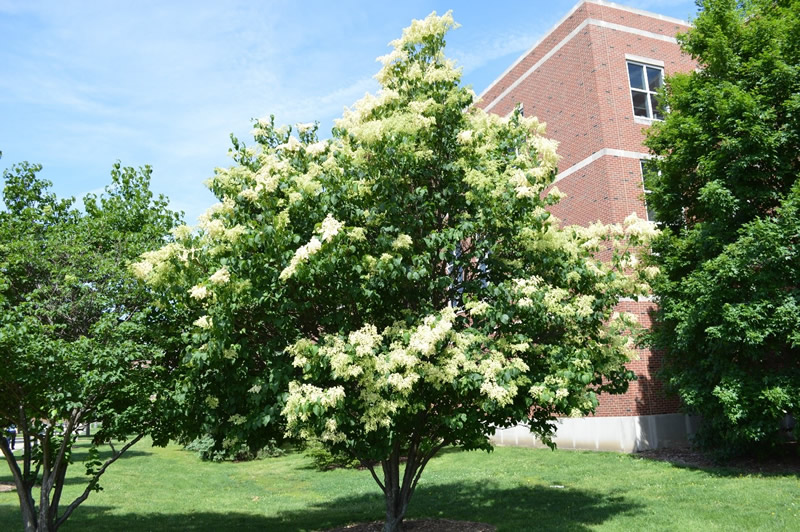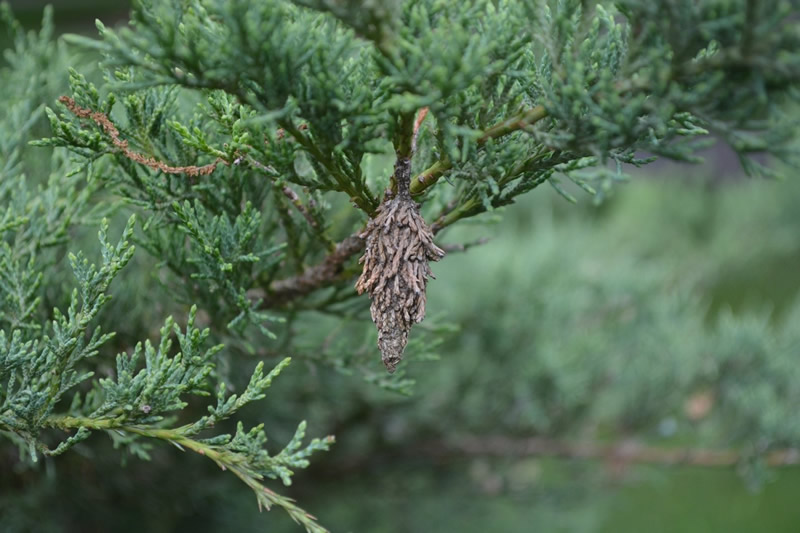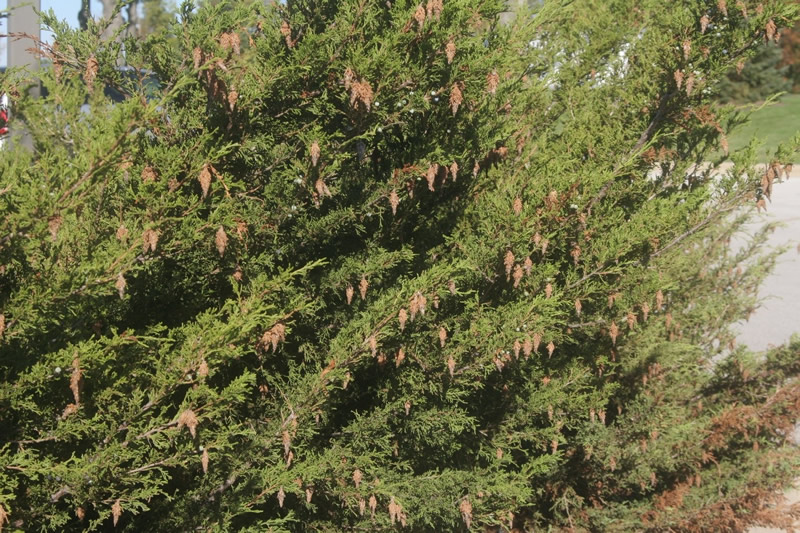Issue 4, June 1, 2020
Scouting for Bagworms
When the Japanese tree lilacs are in bloom, it is time to scout for and control bagworms. Japanese tree lilac is a common urban tree that flowers in early- to mid-June, later than other lilac species. The fragrant blossoms are large, white, and hard to miss. But don’t get swept away by their aroma. Bagworm caterpillars may be hatching on nearby evergreens and preparing to find their next host.

Japanese tree lilac
Bagworms hatch from their eggs in mid- to late-June, then spin silks which they use catch the wind and balloon to other plants. These paratroopers’ flights coincide with the blooming of Japanese tree lilac. If room allows it, they may just keep living the same plant, especially on arborvitae or juniper. However, their host trees include hundreds of other species, including pine and spruce.
Bagworm caterpillars initially feed on the outer layer of the leaves or needles, causing browning, usually starting at the top of the tree. As they grow, their appetite increases and they begin to eat all the foliage. Damage from heavy infestations can be unsightly and can kill branches or whole plants.
As the caterpillar feeds, it produces silk and uses foliage from the host plant to create a protective bag. The caterpillars pupate for seven to 10 days in late summer. Neither adult feeds. The adult female remains in the bag and is without legs, wings, eyes or mouthparts. The male emerges from the bag as a black moth and finds a female within a bag to mate. After mating, she produces 500 to 1,000 eggs, keeping them protected inside her body. Dissecting a bag in the early spring will reveal a dead female with lots of little eggs ready to hatch.

Bagworm
Bagworms are most likely to be noticed in August after they have formed their bags. At this point, the bag protects the insect from chemical controls, making any attempts futile. However, handpicking remains a viable option.

Bagworm infestation on juniper. Photo credit: Richard Hentschel
Bagwrom caterpillars are easier to control when they are small. They remain susceptible to chemical treatment into early July. The following chemical treatments are effective for bagworm: Bacillius thuringiensis kurstaki (also known as BTK, and found in Dipel and Thuricide), Spinosad (organically derived and found in products like Conserve) and cyfluthrin (Tempo). As always, with pesticides, read and follow the labels to ensure safe and effective application. Follow-up applications may be needed.
Author:
Kelly Allsup